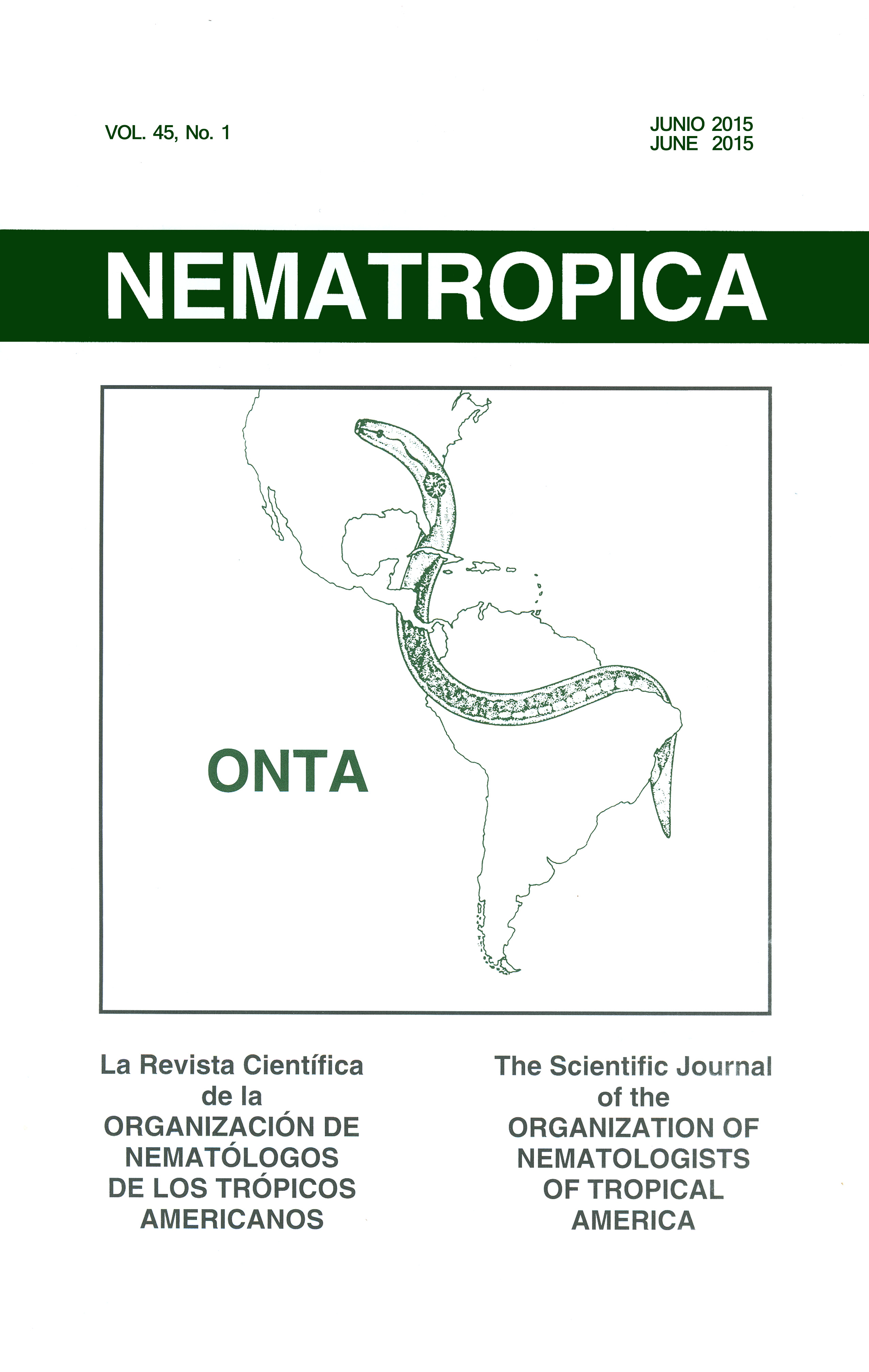OCORRÊNCIA DE NEMATOIDES E PRODUTIVIDADE DE FEIJOEIRO E MILHO EM FUNÇÃO DE SISTEMAS DE CULTIVO SOB PLANTIO DIRETO
Keywords:
Meloidogyne incognita, Phaseolus vulgaris, Pratylenchus brachyurus, Rotylenchulus reniformis, Urochloa ruziziensis, Zea maysAbstract
Nematodes are responsible for significant damage and yield suppression to common bean and maize. A possible strategy for more efficient management of these pathogens is crop rotation with non-host or nematodeantagonistic plants. The choice of plants to be used in the management of nematodes depends on knowledge of the nematode species that are present in a field and their level of infestation. The aim of this research was to evaluate the occurrence and population density of nematodes and common bean and maize yield in cultivation systems that also included Urochloa ruziziensis. The experiment was installed in a site that was naturally infested with nematodes and conducted for three years under no-tillage. The treatments consisted of cropping systems for
production of straw, with maize alone, maize intercropped with U. ruziziensis, and U. ruziziensisalone (summer 2011/2012), alternating with two harvests of common bean (spring 2011 and 2012). The population of nematodes was determined from soil and roots about 80 d after sowing common bean (first and second harvests), and 104 days after sowing maize and U. ruziziensis. Common bean and maize yields were determined by threshing pods and ears contained in the entire plots. The cropping systems that included maize tended to favor population increase of Pratylenchus brachyurusand Meloidogyne incognitaand lower yield of common bean. Cultivation of U. ruziziensisalone lowered the population density of P. brachyurusand M. incognita, maintaining higher
common bean yield. The cultivation of maize alone or intercropping of maize and U. ruziziensisreduced the population of R. reniformis. Therefore, the inclusion of antagonistic and (or) poor host plants was necessary in these cropping systems to reduce populations of nematodes and maximize the common bean and maize yield.

